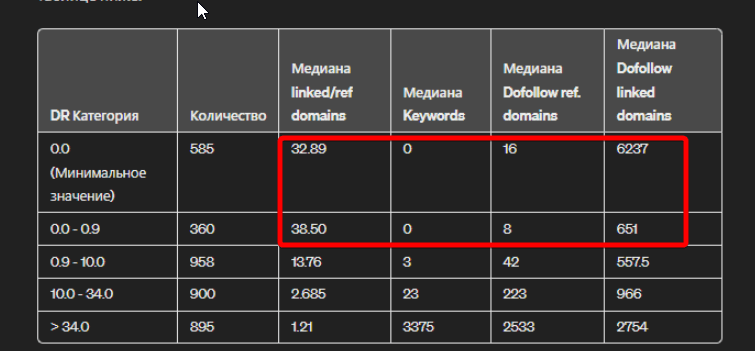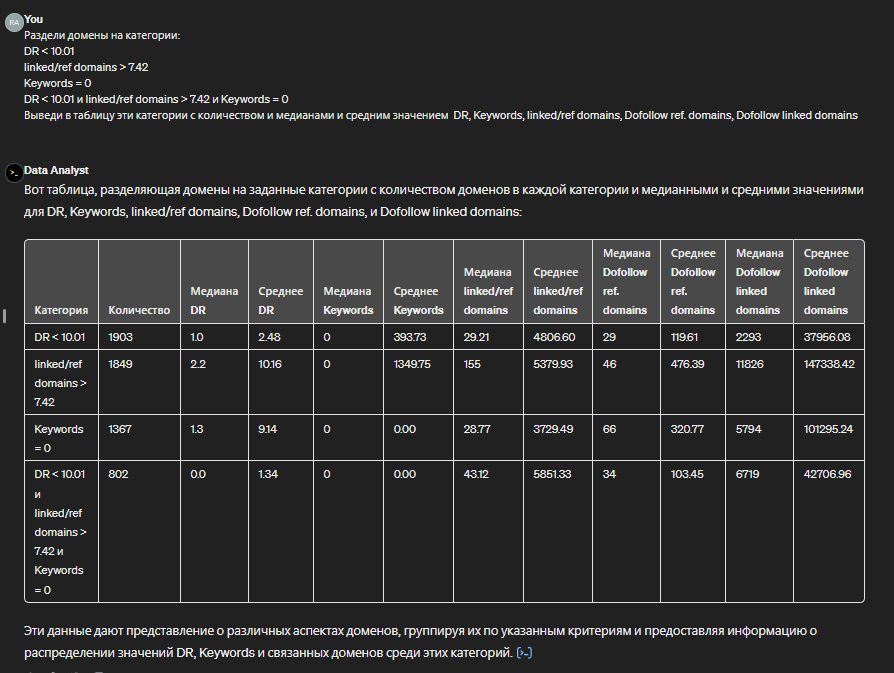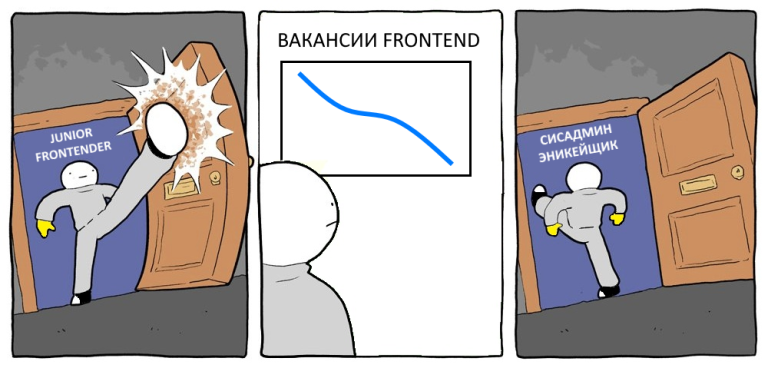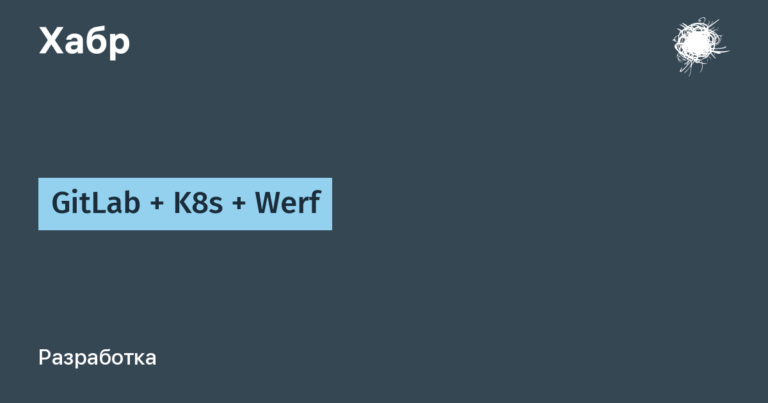Analyzing Donor Domains Using chatGPT and Data Analyst

ChatGPT has many plugins, each of which offers unique options to extend the functionality of this tool. From code creation to data analysis. Plugins make ChatGPT an even more powerful and versatile tool for various tasks.
I want to tell you about the Data Analysis plugin. This is a development from OpenAI, which is a plugin that makes it possible to create and execute code directly in the ChatGPT interface, as well as work with files uploaded by the user. Formerly known as Code Interpreter, this plugin was previously only available as a beta feature, but is now available to all chatGPT Plus subscribers.
I’ll show you a way to use Data Analysis to analyze a link site and select domains to reject in Google Search Console.
Preparatory work
First, we download domains from the Donor Domains report from Ahrefs and calculate the ratio of donors to acceptors. We need the following metrics for referring domains:
DR is a measure of the relative link quality of the referring domain.
Dofollow ref. domains – the number of dofollow domains that link to the site.
Dofollow linked domains – the number of domains that are linked by dofollow links.
linked/ref domains – divide Dofollow linked domains by Dofollow ref. domains to understand the relationship between incoming and outgoing links.
Keywords – the number of keywords of the referring domain in the TOP 100 Google.
Next we find Data Analyst in the directory and launch it. We upload the resulting data file to chatGPT and ask you to look at it:

Analyzing data by group
We will divide the intervals into quantiles, minimum and maximum values. This is necessary to ensure that the data is statistically significant and convenient for analysis.
Let's analyze domains by DR. We only take domain names where there are more than 0 donor domains. There is no point in analyzing domains by DR that have 0 external links.

We see that domains with DR less than 10 have almost no keys and donor domains, but have a large number of referring domains. This is the first group where there may be bad domains.

Let's analyze the domains in relation to donors and acceptors. Here we also take only blast furnaces where there are more than 0 donor domains.

We see that domains with DR less than 10 have almost no keys and donor domains, but have a large number of referring domains. This is the first group where there may be bad domains.

Let's analyze the domains in relation to donors and acceptors. Here we also take only blast furnaces where there are more than 0 donor domains.

It can be seen that 0 referring domains included rather weak domains. But there are few of them, and they are relatively safe.

We also see that domains that have more than 7,425 links from the donor domain have weak DR and key indicators. This is another group where there may be bad domains.

Let's analyze the keywords. This time we are taking all domains.

It can be seen that domains with 0 keys have a very small DR and a very large donor to acceptor ratio. This is the last group where there may be bad domains.

Let's analyze all these groups together
Let's analyze all these groups together. This time we'll add the averages to the medians to see special cases. For example, most domains in the DR group have 0, and a few have 50. And if there is one, the average will show it.

Let's look at each category:
DR < 10. By average number of keys it is seen, that among the domains with DR there are domains that are ranked in Google for a large number of keywords. Therefore, I would not give up on this entire category.
linked/ref domains > 7.42. Here the average number of keys is even higher, i.e. There are domains that rank quite well. The average DR is above the median. This means there are domains with good DR. Here I also have good domains.
Keywords = 0. Average DR – almost 10. This means that some domains, in theory, can provide normal link weight. But otherwise everything is bad here.
DR < 10.01 and linked/ref domains > 7.42 and Keywords = 0. Here Even according to averages everything is bad. Domains in this group are ideal candidates for link disavowal in the GSC.
results
As a result of the analysis, we have a group with domains that can be rejected. Let's ask chatGPT to make us a list of domains. We download and can upload them to GSC.

Such an analysis can be done in Python manually without AI. But with chatGPT it is much easier! The plugin writes the code itself and corrects errors in the code if they arise. If desired, you can do such analyzes for junior specialists, since chatGPT does part of the work itself.
Useful links:
Be sure to take chatGPT and Data Analyst into your arsenal!
Thanks for reading! I would be grateful for subscribing to my TG channel. In it I share cases of using chatGPT, SEO cases and analytics that interested me.




